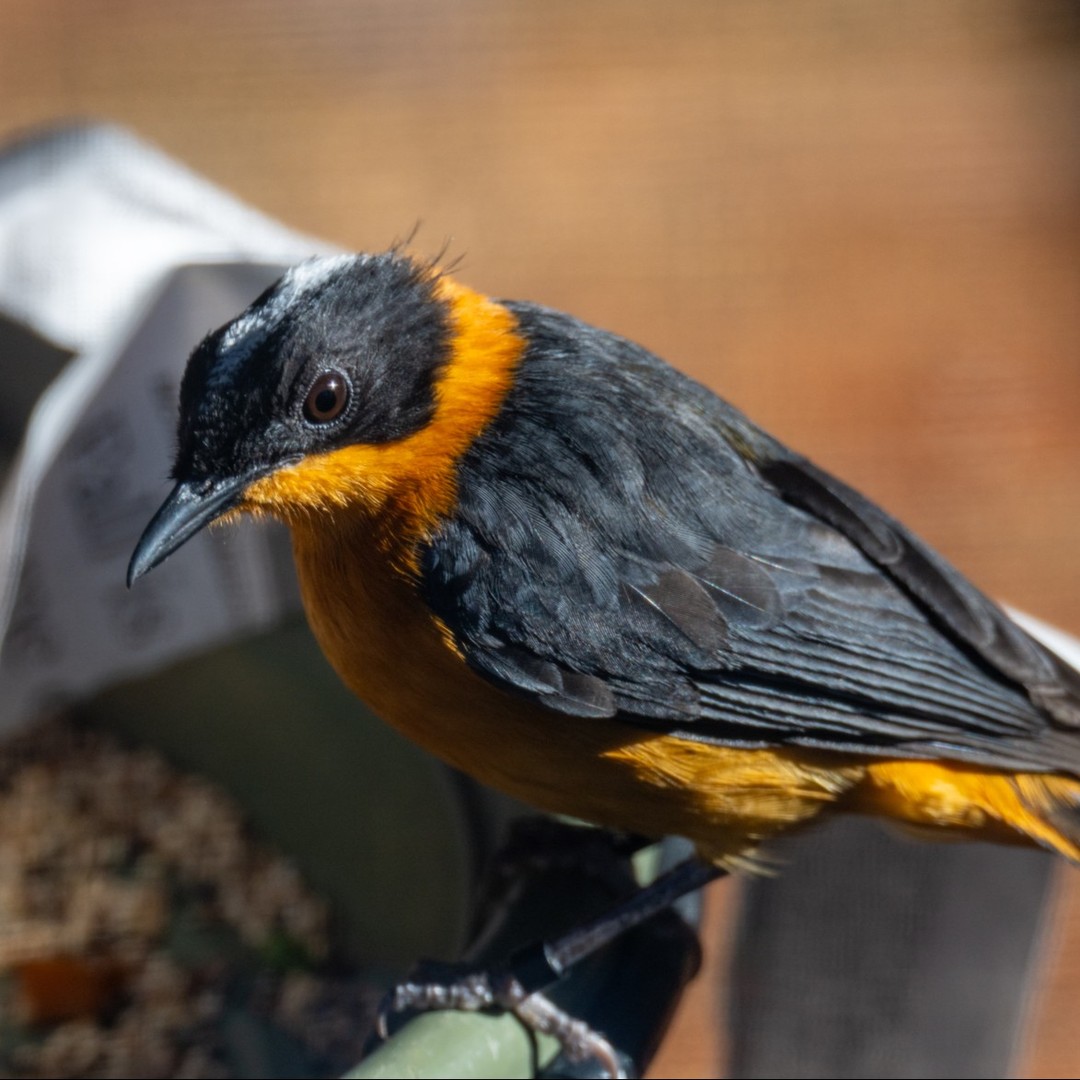- Introduction to the snowy-crowned robin chat, its habitat, and appearance
- The decline in global songbird populations and its causes
- Practical ways to protect and support songbird populations
- Role of zoos and conservation programs, including the SAFE initiative
- Importance of public awareness and involvement in bird conservation efforts
The snowy-crowned robin chat is a fascinating bird species, known for its characteristic crown of white feathers. This songbird resides primarily in sub-Saharan Africa, where it thrives in various habitats, including woodlands and savannahs. Named for their resemblance to North American robins, these birds are not only visually impressive but also offer insights into broader ecological issues affecting birds globally.
Songbirds have been an intrinsic part of ecosystems around the world, their melodic calls and vibrant presence contributing to the biodiversity of environments they inhabit. However, since 1970, the world has seen a substantial decline in songbird numbers, with the loss exceeding 3 billion individuals. This staggering decrease can be attributed to several factors, with habitat loss being the most significant. Urbanization and deforestation remove critical breeding and feeding areas for these birds, dramatically reducing their populations.
Predation by domestic cats has also been a significant threat to songbirds. Cats are natural hunters and can be responsible for the death of billions of birds annually. Another critical issue threatening songbirds is collisions with windows. Birds often collide with windows because they perceive reflections of trees and sky as real, leading to fatal impacts.
Despite these challenges, concerted efforts can help reverse the decline of songbird populations. Individual actions can collectively make a substantial impact. For instance, keeping cats indoors or on a leash when outside can dramatically reduce bird mortality. Similarly, minimizing artificial lighting at night helps prevent disorientation in birds during their long migratory journeys.
Planting native vegetation provides essential food and shelter resources for migratory and resident birds alike. Moreover, simple modifications to windows with visible patterns can deter birds from flying into them, significantly reducing collision-related deaths.
The Virginia Zoo exemplifies commitment to bird conservation through its involvement in the Association of Zoos and Aquariums’ SAFE North American Songbirds program. This initiative aims to protect the 319 songbird species found across North America by fostering collaboration between zoos, researchers, and conservationists. Through education, research, and direct conservation efforts, such programs strive to maintain and restore healthy bird populations.
Public awareness is an essential component of successful conservation, ensuring that people understand the significance of preserving songbirds and the ecosystems they inhabit. Education campaigns can inform communities about simple steps they can take and the broader environmental importance of their actions.
To sum up, the snowy-crowned robin chat, along with countless other species, relies on both regional and global conservation initiatives for its survival. By understanding these birds’ challenges and actively engaging in their preservation, we can help sustain their populations for future generations. The integration of individual actions, zoo programs, and scientific research will be crucial in overcoming the threats facing songbirds today, ensuring their vital role in our world’s ecological balance.
*****
Source Description
Have you ever seen a snowy-crowned robin chat before? Well, now you have! Snowy-crowned robin chats are non-migratory songbirds native to sub-Saharan Africa that are named for their similar appearance to North American robins.
Happy Since 1970, the world’s population of songbirds has decreased by over 3 billion individuals due to habitat loss, predation by cats, and collisions with windows. Luckily, there are many actions YOU can take to protect remaining songbirds! For example, you can keep your pet cats indoors or use a leash for outdoor exploring 🐱, dim your lights at night to reduce confusion during long-distance flights 🔅, plant native vegetation to provide food for birds undertaking migration 🪴, or put patterns on your windows to help birds avoid windows🪟.
The Virginia Zoo is proud to be a member of the Association of Zoos and Aquariums’ (AZA) Saving Animals from Extinction (SAFE) North American Songbirds program to protect the 319 songbird species that call North America home!


